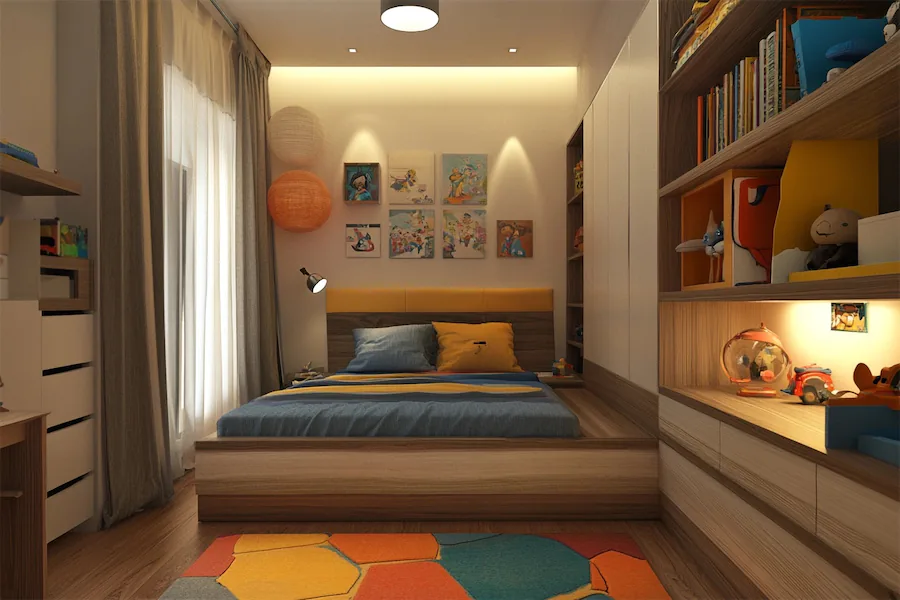Designing a functional kid’s room requires a thoughtful blend of practicality, safety, and adaptability to create a space that supports your child’s growth and activities. Here’s a comprehensive guide to achieving this:
Introduction to Functional Kid Rooms
A functional kid’s room is designed to cater to various activities such as sleeping, studying, and playing, all while maximizing available space and ensuring safety. Incorporating versatile furniture and smart storage solutions can help create an environment that evolves with your child’s changing needs.
History and Origins of Functional Kid Rooms
The concept of functional kid rooms has evolved over time, with a growing emphasis on creating spaces that are not only aesthetically pleasing but also practical and adaptable. This approach stems from the need to make the most of available space, especially in urban settings, and to provide children with environments that support their development.
Key Features of Functional Kid Rooms
- Multi-Functional Furniture: Utilizing pieces that serve multiple purposes, such as loft beds with desks underneath or storage ottomans, helps in conserving space and adding utility.
- Smart Storage Solutions: Incorporating built-in shelves, under-bed storage, and wall-mounted organizers keeps the room tidy and ensures that items are easily accessible.
- Adaptable Design: Choosing furniture and decor that can grow with your child, such as adjustable desks and neutral color schemes, allows the room to be easily updated as your child matures.
- Safety Considerations: Ensuring that furniture is sturdy, using non-toxic materials, and securing heavy items to walls are crucial steps in creating a safe environment for children.
Applications of Functional Kid Rooms
- Small Spaces: In compact areas, functional design is essential. Implementing vertical storage and foldable furniture can make the most of limited space.
- Shared Bedrooms: For siblings sharing a room, bunk beds and clearly defined personal zones can help in managing space efficiently and reducing conflicts.
- Study Areas: Designating a specific area for studying with appropriate lighting and minimal distractions fosters a conducive learning environment.
Considerations When Designing a Functional Kid Room
- Personalization: Involving your child in the design process to reflect their interests makes the space more inviting and comfortable for them.
- Flexibility: Opting for modular furniture and decor that can be easily modified ensures the room remains functional as your child’s needs change.
- Budget-Friendly Options: DIY projects and upcycling existing furniture can be cost-effective ways to enhance the room’s functionality without significant expenses.
Conclusion
Creating a functional kid’s room involves thoughtful planning and a focus on adaptability. By incorporating multi-functional furniture, smart storage solutions, and considering your child’s evolving needs, you can design a space that is both practical and enjoyable, supporting their development for years to come.
